Wren House Adventures
By Doug Donaldson
A few years ago, my wife and I noticed a pair of beautiful little Bewick’s Wrens frequenting our backyard feeder. Eventually my wife discovered they had created a nest in the folds of an old tarp stored by our shed. We kept an eye on the nest, but one night it was raided and destroyed. It was clearly time to build some wren houses!
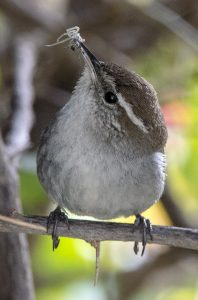
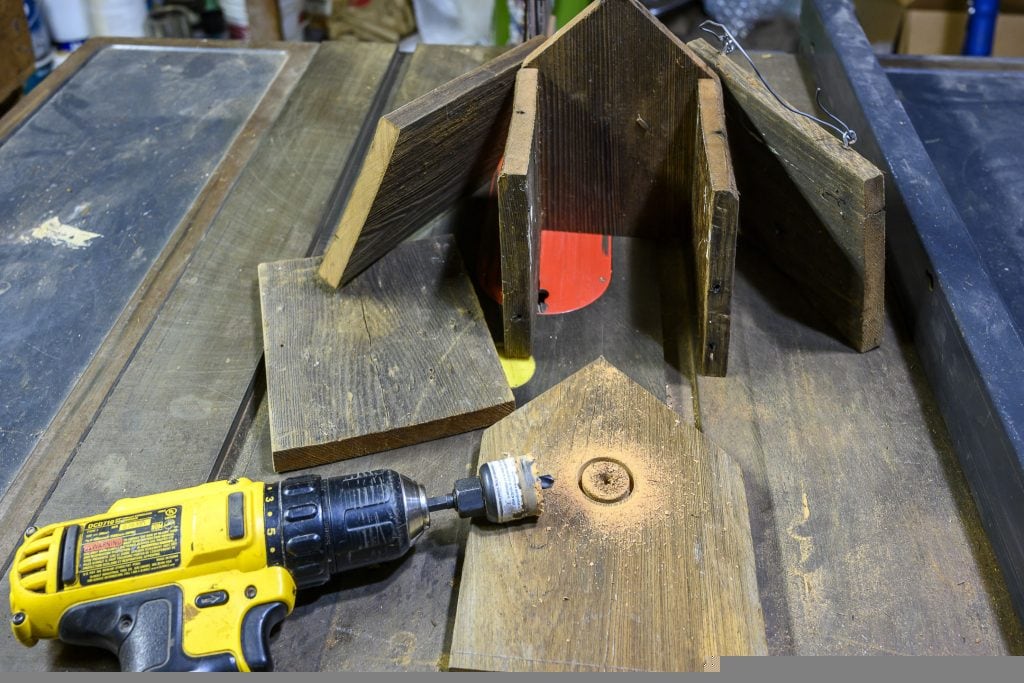
I found some old redwood fence boards that could work for this project and checked the internet for some design ideas and other guidance. I found quite a few website resources and sensed a consensus that the proper sized entrance hole for Bewick’s Wrens was 1 1/8 inches wide, 4-6 inches above the floor of a 6-8-inch-high wren house. It didn’t take long to cut the walls, roof boards, and bottom for two birdhouses on my table saw, but I discovered that I had a hole saw blade of 1 1/4” but not 1 1/8”. I used the blade I had to cut the entrance hole, assembled the birdhouses and hung them in some tree branches 6-7 feet above the ground (within the range recommended by my internet sources).
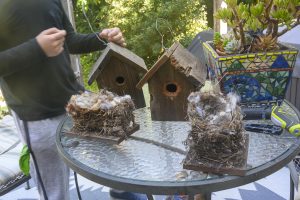
A year went by. We continued to see Bewick’s Wrens frequent the feeder. But none showed interest in my birdhouses. As we got to know the wrens better, we observed that they preferred the cover in dense shrubs and bushes, typically flying into a thick bougainvillea against the house or a Hebe shrub near the feeder.
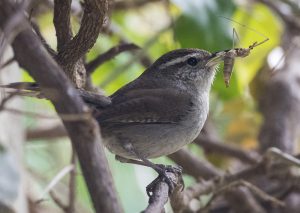
So, I decided I would put a birdhouse in a place they like. I built two more birdhouses just like the first two, but with one difference. This time, I went to the hardware store and purchased a 1 1/8-inch bit, making entrance holes of the recommended diameter. I hung one house inside the bougainvillea and another in a thick camelia bush nearby.
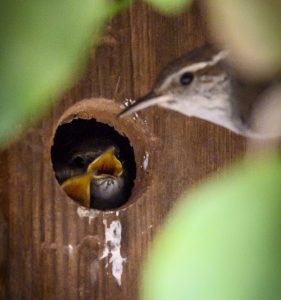
Bingo! We quickly noted that the wrens were very active in the bougainvillea and discovered a pair was building a nest in the new birdhouse. We didn’t notice immediately, but the other house (in the camelia) was soon occupied as well. We watched and I photographed the busy parents. Eventually, two newly fledged chicks came into the picture. Wren sightings around the feeder were very common, with many flitting in and out of the bougainvillea.
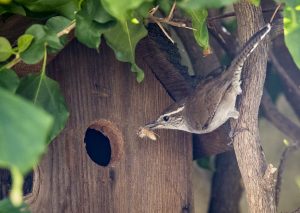
Before too long we discovered that they were back in the birdhouse. A double clutch!

The second nest was built on top of the first one, and two more chicks were hatched. We were out of town when they would have fledged, and we hope they made it. However, weeks later, when I removed the houses for cleaning, I noticed that a predator (rodent?) had attempted to raid the house by chewing around the entrance hole. It wasn’t clear if the critter got in. When cleaning out the old nests, we found two unhatched eggs. Is that what the predator was after? Or did it get the chicks just before they fledged? We will never know, but we are certainly eager to find out what might happen in our wren houses this coming spring!

If you would like to build your own wren house, here are some helpful links:
https://nestwatch.org/wp-content/themes/nestwatch/birdhouses/house-wren.pdf
http://www.birdwatching-bliss.com/bird-house-dimensions.html
https://www.wild-bird-watching.com/Wren_House.html
https://www.birds.cornell.edu/k12/educators-guide-to-nest-boxes/
Doug Donaldson is a local birder and photographer. He has volunteered as a GGBA Burrowing Owl Docent since 2010. Doug lives in Albany.
